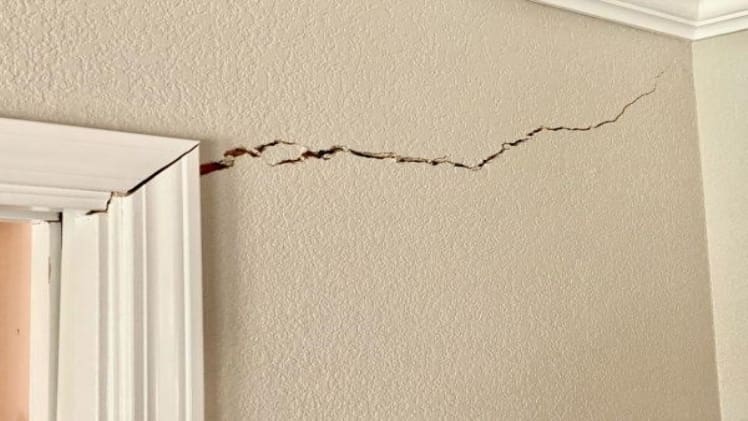As a homeowner in Garland, TX, foundation cracks can be concerning. Foundation cracks can form for various reasons, and it is essential to determine the cause so that the appropriate repairs can be made. This write-up will discuss some common causes of foundation cracks in Garland, TX homes. We will also provide tips on how to prevent foundation cracks from forming. Let’s get started.
Vertical Cracks and Causes
Some people think vertical cracks in their foundations signify structural damage, but this is not always the case. Wide cracks can be caused by hydrostatic pressure pushing against them and forcing them out like ripples on the water at different depths – creating an effect similar across all sides.
Stair-step Cracks and Causes
Foundation stair-step cracks result from seismic activity or soil that is too soft to bear the weight of a structure.
A phenomenon usually occurs if a construction site during building construction when an excavation has been carried out and the ground no longer bears the weight of structures, but slight movement in earth creates small pits in it. It occurs because soil losses its bearing capacity, leading to loose landslides with high inertia from sudden upheavals causing rotating clusters of loosely packed blocks called “earth slides”.
In areas with clay soils or winter rains, it is waterlogging and swelling clays. It increases pressure on individual blocks, leading to their sliding movements with gravitational force.
Make sure not only professional knows about these problems before starting any work yourself- consider hiring a professional no mistakes can happen due to unnecessary accidents.
Diagonal Foundation Cracks and Causes
The stability of a structure is dependent on how much weight it can stand before falling. Differential settlement occurs when one side sinks more than the other, which causes cracks inwards and outward from that imbalance point between them as well as an increase or decrease in height for whichever part has fallen further below ground level due to loss of underlying soil mass during excavation work needed before installation time.
The cause could be something like piling pier blocks up on top under less-settled earth, so there’s extra support where you need it most.
Horizontal Foundation Cracks
Foundation repair Garland cracks are usually the most severe kind of foundation problem. They can indicate soil pressure from fluctuations in temperature or hydrostatic pressure caused by excess moisture in your yard’s dirt which may have been absorbed during rainstorms and snowfall seasons, among other things! To fix these types’ horizontal-oriented slit-like fractures called “fissures,” use carbon fibre repair methods that help stabilize damaged structures, so you won’t notice anything different about them when walking around the home.
Causes of Foundation Cracks
As the season changes, the temperature of the earth’s surface varies. When it gets hot, like in the summertime, heat radiates into a foundation, making it expand and contract as it dries out. When cold weather comes by (like in the winter), there isn’t as much radiant heat energy being absorbed, so now you have a foundation that’s shrinking as it tries to protect itself from cold temperatures.
In other words, when one side is expanding while another is contracting, something has to give–and if gravel or cement has been used as a barrier for your house, then this material will crack under pressure.
Conclusion
Cracks in a foundation may start as small hairline cracks and eventually lead to more giant fissures. Often, these cracks are not visible on the surface but can be detected by examining areas where water sits for long periods, such as near your front steps or porch area.
If you suspect any foundation crack, it is essential to call an experienced contractor who will come out and examine your home’s structure to determine what repairs need to be made before they become worse.

